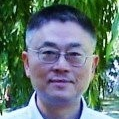Recent Advances in Technologies for Water and Wastewater Treatment
A special issue of Environments (ISSN 2076-3298).
Deadline for manuscript submissions: closed (31 December 2023) | Viewed by 22465
Special Issue Editor
Interests: development of chemicals and optimization of unit processes for water/wastewater treatment; nutrient removal and recovery from wastewater; degradation of emerging micro-pollutants; environmental remediation
Special Issues, Collections and Topics in MDPI journals
Special Issue Information
Dear Colleagues,
With increasing global water pollution levels and more stringent regulations to manage water quality, innovative water-treatment technologies have been sought to find solutions. This Special Issue of Environments aims to provide a platform for worldwide researchers to disseminate recent scientific developments and technical solutions in the areas of water- and wastewater-treatment technologies. Authors are invited to submit original research and review articles focusing on this area. Potential topics include but are not limited to the following:
- Novel technology development to remove various pollutants including those that cause emerging concerns in surface water/groundwater and wastewater, such as new types of adsorbents, coagulants and oxidants, granular sludge, ion exchange, membrane-aerated biofilms, etc.
- Membrane separation in combination with other treatments that would achieve high-quality safe water with affordable cost.
- New technologies to improve pre-treatment, recovery, and reliability of membrane desalination processes.
- Novel concepts to stimulate sustainable nutrient removal and resource recovery from wastewater.
- Innovative tertiary treatment technologies for high-quality wastewater effluents.
Prof. Dr. Jia-Qian Jiang
Guest Editor
Manuscript Submission Information
Manuscripts should be submitted online at www.mdpi.com by registering and logging in to this website. Once you are registered, click here to go to the submission form. Manuscripts can be submitted until the deadline. All submissions that pass pre-check are peer-reviewed. Accepted papers will be published continuously in the journal (as soon as accepted) and will be listed together on the special issue website. Research articles, review articles as well as short communications are invited. For planned papers, a title and short abstract (about 100 words) can be sent to the Editorial Office for announcement on this website.
Submitted manuscripts should not have been published previously, nor be under consideration for publication elsewhere (except conference proceedings papers). All manuscripts are thoroughly refereed through a single-blind peer-review process. A guide for authors and other relevant information for submission of manuscripts is available on the Instructions for Authors page. Environments is an international peer-reviewed open access monthly journal published by MDPI.
Please visit the Instructions for Authors page before submitting a manuscript. The Article Processing Charge (APC) for publication in this open access journal is 1800 CHF (Swiss Francs). Submitted papers should be well formatted and use good English. Authors may use MDPI's English editing service prior to publication or during author revisions.
Keywords
- pre-treatment, recovery, and reliability of membrane processes
- novel technologies for the removal of emerging micropollutants
- nutrient removal and resource recovery from wastewater
- innovative tertiary treatment technologies





